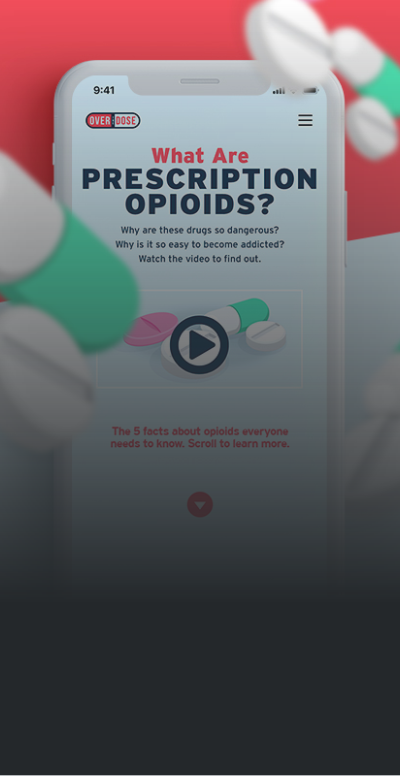Case Study

A statewide campaign to reduce opioid misuse among adults in Illinois.

Behavior Change Approach
A Dose of Truth, a campaign developed with state-based nonprofit Prevention First, educates Illinois adults about the risks of opioid use to prevent misuse and promote the safe and responsible management of prescriptions.
Built on formative research, A Dose of Truth increases the perceptions of risk and tackles stigma among Illinois adults through tailored and direct messaging. The campaign breaks down the risks and processes of addiction and overdose in relevant and digestible messages, avoiding the extreme messaging approach common in drug prevention campaigns. We use our Decision Blocks Strategy to build knowledge in a logical sequence, working to address important gaps in foundational knowledge that prevent many adults from recognizing their own risk. Then, we provide clear, attainable actions adults can take to minimize their risk.
Built on formative research, A Dose of Truth increases the perceptions of risk and tackles stigma among Illinois adults through tailored and direct messaging. The campaign breaks down the risks and processes of addiction and overdose in relevant and digestible messages, avoiding the extreme messaging approach common in drug prevention campaigns. We use our Decision Blocks Strategy to build knowledge in a logical sequence, working to address important gaps in foundational knowledge that prevent many adults from recognizing their own risk. Then, we provide clear, attainable actions adults can take to minimize their risk.
Audience Insights
Through formative research focus groups, we discovered:
1. Important gaps in knowledge, such as who is at risk for addiction, and how the addictive qualities of opioids could impact anyone. These knowledge gaps lead to continued misuse of opioids and stigmatization of those struggling with addiction.
2. While many report understanding that opioid misuse increases their risk, their self-reported behavior shows that they do not truly believe their actions could result in consequences like overdosing. For example, over 40% of participants reported drinking alcohol with their opioids, and nearly 1/3 reported using opioids for non-medical reasons such as to relax or reduce anxiety.
3. The audience believes that overdoses only happen to “hardcore” drug users who have hit rock bottom. It does not happen to "regular" people who take opioids to relax or have fun, like them. This stigma is often perpetuated by drug prevention campaigns that depict overdoses in rundown environments and dire situations.
1. Important gaps in knowledge, such as who is at risk for addiction, and how the addictive qualities of opioids could impact anyone. These knowledge gaps lead to continued misuse of opioids and stigmatization of those struggling with addiction.
2. While many report understanding that opioid misuse increases their risk, their self-reported behavior shows that they do not truly believe their actions could result in consequences like overdosing. For example, over 40% of participants reported drinking alcohol with their opioids, and nearly 1/3 reported using opioids for non-medical reasons such as to relax or reduce anxiety.
3. The audience believes that overdoses only happen to “hardcore” drug users who have hit rock bottom. It does not happen to "regular" people who take opioids to relax or have fun, like them. This stigma is often perpetuated by drug prevention campaigns that depict overdoses in rundown environments and dire situations.
Implementation Strategy
-
COMPREHENSIVE WEBSITE
Rescue created a campaign website to serve as a single hub of essential information for all Illinois adults, including the risks of opioids and connections to state resources for treatment, or safe storage and disposal. It organizes information to allow visitors to quickly find the content most relevant to them based on research and strategic insights.+ expand - collapse -
SOCIAL &
DIGITAL MEDIAUsing research-driven targeting measures, social and digital advertisements feature interesting and lesser-known pieces of education, driving users to either the website or flagship videos to learn more. Ads are designed to spark engagement, and present information to increase the audience’s perceived relevance of the content.+ expand - collapse -
POINT-OF-CARE PLACEMENTS
We designed advertisements for doctors’ offices and pharmacies to deliver timely, relevant risk education at the moment where opioid use is initiated or discussed.+ expand - collapse
From 2019-2020, A Dose of Truth has achieved impressive metrics, indicating a messaging strategy successful at engaging our audience and increasing the perceived relevance of this topic. Here’s a snapshot of recent metrics.




















